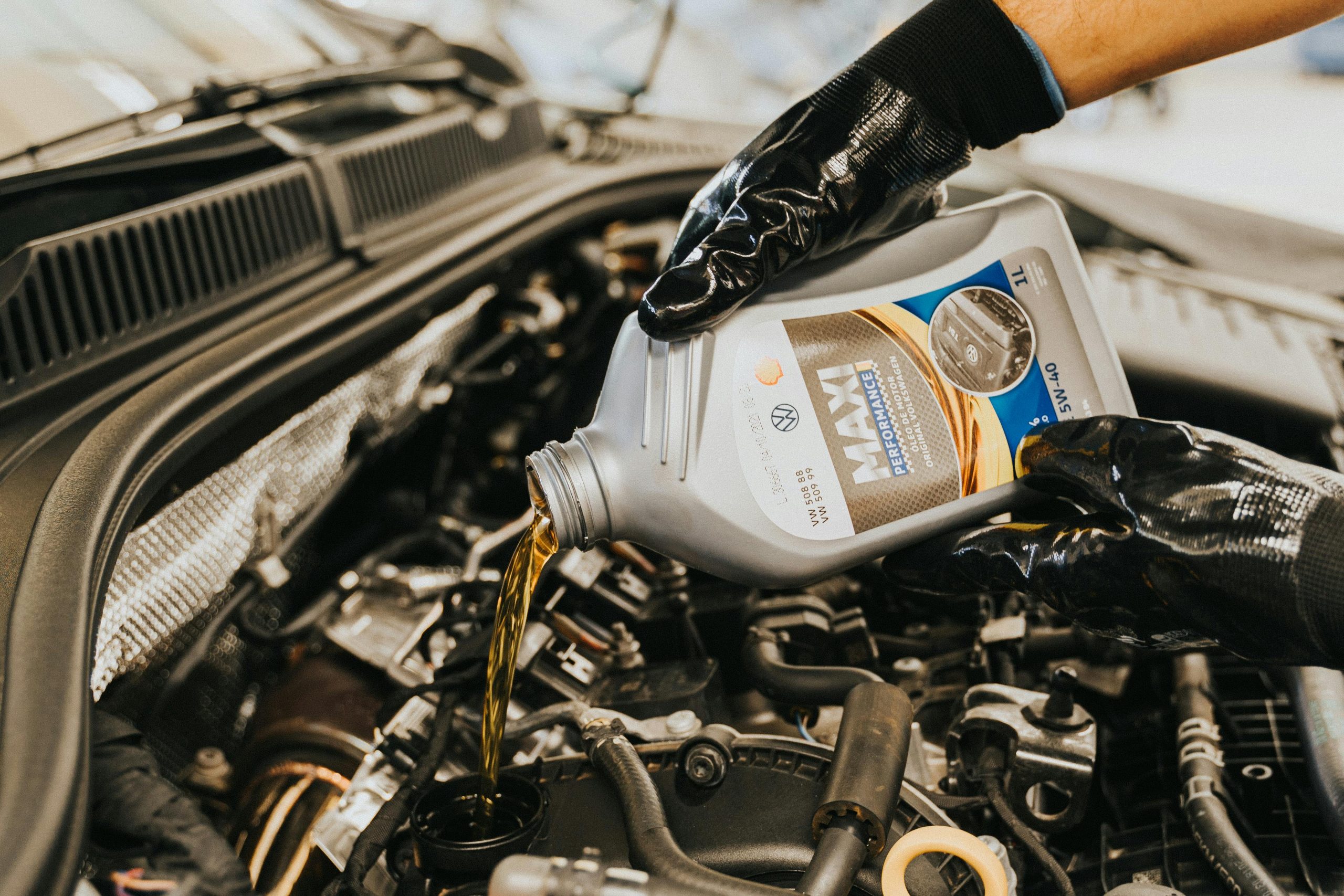
Choosing the right motor oil is essential for your vehicle’s performance and longevity. Using the wrong type can reduce engine efficiency or even cause damage. Understanding the differences between motor oils, their grades, and recommended uses helps you maintain your car properly.
What Motor Oil Does
Motor oil isn’t just lubrication; it plays multiple roles in keeping your engine healthy:
- Lubricates moving parts: Reduces friction and wear.
- Cleans the engine: Suspends dirt and debris to prevent buildup.
- Cools the engine: Transfers heat away from critical components.
- Protects against corrosion: Coats metal surfaces to prevent rust.
- Improves fuel efficiency: Reduces engine resistance, helping your car run smoother.
Using the wrong oil can interfere with these functions. Understanding motor oil types is critical to avoid engine problems, like what happens if you put the wrong oil in your car.
Common Types of Motor Oil
Motor oils are generally divided into four main categories:
a. Conventional Oil
Conventional oil is derived from refined crude oil. It’s the most basic type, suitable for everyday driving in older or low-mileage vehicles.
Benefits:
- Affordable and widely available.
- Meets the basic needs of most engines.
Limitations:
- Requires more frequent changes (every 3,000–5,000 miles).
- Less effective in extreme temperatures or high-performance engines.
b. Synthetic Oil
Synthetic oils are engineered with chemical compounds to provide superior performance and protection.
Benefits:
- Resists breakdown in extreme heat or cold.
- Cleans engine deposits more effectively.
- Reduces engine wear and improves fuel efficiency.
Limitations:
- More expensive than conventional oil.
- Some older vehicles may not need synthetic oil.
c. Synthetic Blend Oil
Synthetic blends combine conventional and synthetic oils. This type is a compromise between performance and cost.
Benefits:
- Provides extra protection against engine wear.
- Performs better in high-stress driving than conventional oil.
- Less expensive than full synthetic oil.
Limitations:
- Not as protective as full synthetic in extreme conditions.
d. High-Mileage Oil
High-mileage oils are formulated for vehicles with over 75,000 miles. They often include seal conditioners to prevent leaks.
Benefits:
- Reduces oil consumption in older engines.
- Helps prevent leaks and minimize wear.
Limitations:
- More expensive than conventional oil.
- Not necessary for new vehicles.
Motor Oil Grades
Motor oil comes in different viscosity grades, which indicate how thick or thin the oil is at various temperatures.
a. Multi-Grade Oils
Most modern cars use multi-grade oils (e.g., 5W-30, 10W-40):
- The first number with “W” (winter) indicates cold-temperature flow.
- The second number indicates high-temperature viscosity.
Benefits:
- Provides protection in both cold starts and hot engine operation.
b. Single-Grade Oils
Single-grade oils (e.g., 30, 40) were common in older cars but are rarely used today.
- Best suited for engines with stable operating temperatures.
- Limited performance in varying climates.
Choosing the Right Motor Oil
Picking the right motor oil isn’t just about grabbing any bottle off the shelf—it’s about understanding what your engine needs to run smoothly and last longer. Several factors affect which oil is best for your vehicle:
1. Manufacturer Recommendations
Your vehicle’s owner’s manual is the most reliable source for choosing the correct oil. It tells you:
- The recommended viscosity, such as 5W-30 or 0W-20
- Whether your engine needs synthetic, full synthetic, synthetic blend, or conventional oil
- Any special requirements for turbocharged, diesel, or high-performance engines
Following these guidelines ensures that the oil can handle the heat, pressure, and demands of your specific engine design.
2. Climate and Temperature
Weather plays a major role in how motor oil behaves:
- Cold climates: Oil thickens in low temperatures, so a lower winter rating like 0W or 5W flows better during start-up. This protects your engine when it’s most vulnerable.
- Hot climates: High temperatures thin the oil. A higher second number like 30 or 40 helps the oil stay stable and maintain protection in the heat.
If you live somewhere with big seasonal changes, consider oil approved for year-round use.
3. Driving Habits
How you drive affects what type of oil your engine needs:
- City driving with frequent stops puts more stress on the engine because it heats up and cools down constantly.
- Long highway drives keep the engine at steady temperatures, which is easier on the oil.
- Towing, hauling, or driving uphill increases engine strain, so synthetic oil may offer better protection.
- Short trips may not heat the oil enough to evaporate moisture, making synthetic oils a smarter choice for cleaner operation.
If your driving habits are demanding, using premium oils with stronger detergents and additives can extend engine life.
4. Engine Age and Condition
Engines change as they age, and so do their oil needs:
- Newer engines often require thinner oils for efficiency.
- Older engines may develop leaks, burn more oil, or experience more wear.
- High-mileage oils contain conditioners that help maintain seals, reduce leaks, and protect worn components.
If your car has over 75,000 miles, switching to high-mileage oil can help improve performance and reduce oil consumption.
Important Tip
Using the wrong oil can lead to several issues, including increased wear, poor fuel economy, or sludge buildup. In more serious situations, it may even cause long-term engine damage. To understand these risks better, see what happens if you put the wrong oil in your car.
Signs You Might Be Using the Wrong Oil
Even when you think you’ve chosen the right motor oil, your engine may show signs that something isn’t working as it should. Paying attention to these early warnings can help you avoid long-term engine damage and expensive repairs. Here are the most common symptoms to watch for:
1. Engine Knocking or Unusual Sounds
If you hear knocking, ticking, or tapping noises:
- The oil may be too thin, causing metal parts to rub together.
- The oil may be too thick, preventing it from reaching tight spaces quickly.
These sounds are usually a sign of poor lubrication and should never be ignored.
2. Oil Pressure Warning Light
Your dashboard oil pressure light turning on is one of the clearest warning signs. It may happen because:
- The oil isn’t flowing correctly.
- The oil filter is clogged.
- The viscosity is wrong, preventing proper pressure buildup.
Driving with low oil pressure can cause severe engine damage within minutes.
3. Smoke or a Burning Smell
Seeing smoke from the exhaust or smelling burning oil often means:
- The oil is breaking down due to heat.
- The wrong oil is burning off inside the engine.
- Leaks are allowing oil onto hot components.
This is especially common when using oil not intended for high temperatures.
4. Poor Fuel Efficiency or Sluggish Performance
If your car suddenly feels heavier or less responsive:
- Incorrect oil may create more friction inside the engine.
- Extra resistance can make the engine work harder, burning more fuel.
- You may notice slower acceleration or rough idling.
These performance changes often show up gradually, so it’s important to pay attention to how your car normally feels.
5. Excessive Engine Deposits or Sludge
Wrong oil may not contain the right detergents to keep your engine clean. This can lead to:
- Thick sludge buildup
- Dark, dirty oil shortly after an oil change
- Reduced engine efficiency
If not addressed early, sludge can block oil passages and cause overheating or total engine failure.
Switching oil types or choosing the wrong grade without following manufacturer guidelines can easily trigger these issues. If you notice any of these symptoms, it’s best to have your car inspected and get an oil change with the correct type and viscosity right away.
Oil Change Frequency
Regular oil changes are key to engine health. Recommendations vary:
- Conventional oil: Every 3,000–5,000 miles.
- Synthetic blend: Every 5,000–7,500 miles.
- Full synthetic: Every 7,500–10,000 miles.
- High-mileage oil: Follow vehicle-specific guidelines.
Always monitor your oil levels between changes and top up as needed.
Additional Considerations
- Additives: Many motor oils contain detergents, anti-wear agents, and friction modifiers to improve performance.
- Environmental factors: Extreme heat, cold, and dusty environments may require oils with special formulations.
- Engine type: Diesel engines, turbocharged engines, and hybrid vehicles may require specialized oils.
Tips for Proper Motor Oil Maintenance
- Check your oil level monthly using the dipstick.
- Look for discoloration or metal particles in the oil, which may indicate engine wear.
- Keep an oil change log to track maintenance.
- Store extra oil properly to avoid contamination.
- Never mix oils of vastly different types without manufacturer approval.
Common Mistakes with Motor Oil
- Using the wrong viscosity or type of oil.
- Skipping oil changes or exceeding recommended intervals.
- Overfilling or underfilling the oil.
- Ignoring oil warning lights.
- Reusing old oil that has degraded.
Correcting mistakes early can save thousands in engine repairs.
Final Thoughts
Understanding types of motor oil and their applications is crucial for your vehicle’s longevity and performance. While modern engines are somewhat forgiving, using the wrong oil can lead to serious issues over time. Always follow manufacturer recommendations, monitor your engine’s performance, and maintain a regular oil change schedule.
Proper oil selection not only improves fuel efficiency and reduces wear but also protects your engine from long-term damage. By knowing the differences between conventional, synthetic, synthetic blend, and high-mileage oils, you can make informed decisions for your car.



